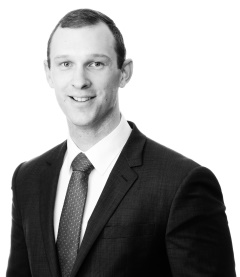The question of when an entity is 'carrying on a business' remains something of a maze.
Last September, the Government released the Treasury Laws Amendment (Enterprise Tax Plan Base Rate Entities) Bill 2017 exposure draft for consultation. The intended purpose was to see only companies deriving income actively, and not passively, able to access the lower company tax rate of 27.5%.
Neither the draft nor associated explanatory memorandum discussed what it means when a company is carrying on a business.
In October, the bill was tabled in parliament, with the ‘carrying on a business’ requirement removed from the ‘base rate entity’ definition altogether and replaced with a ‘bright line’ test that puts a ceiling on the amount of passive income a company can derive before it can access the lower corporate tax rate.
Case law and recently-released material from the Australian Taxation Office means an entity may or may not be carrying on a business. Further, the changes to the company tax rate have a flow-on effect to the imputation rate.
At the 2018 Barossa Convention, Tom Paltridge CTA will look at these developments in his session ‘Reigniting the question of “carrying on a business” and the potentially wasteful imputation system’.
Here Tom outlines some of the challenges in this area.
 |
Tom Paltridge CTA (Grant Thornton) |
“The goal of this session is to provide attendees with a straightforward approach to guiding their clients through the changing small business entity (SBE) tax rate landscape," Tom said.
"My focus will be on the base rate entity (BRE) changes and providing a ‘start to finish’ approach in working through the BRE tax rate requirements and the ability for attendee’s SBE clients to frank their dividends in a post-BRE world. We will also consider the interaction of the BRE passive income changes and explore some potential traps which can arise from these changes.”
The session will also look at how the new rules will impact the franking credits available for use by companies that have $10m–$50m turnover. The potential for franking credit wastage lies in the growth of a company’s turnover interacting with the increases to the turnover threshold for access to the lower company tax rate. Following the money, who will be the most significantly impacted by these changes? Is there a solution or are we going to be stuck with wastage of franking credits?
Tom said: “The session is aimed at providing attendees with a ‘toolkit’ to assist them in advising their SBE clients on their tax and franking credit strategies. In addition, we will walk through some blind spot examples within the BRE system to make attendees aware of potential traps within the BRE system and ensure their client’s franking credits can continue to be utilised efficiently and minimise the potential for credit ‘wastage’.
“The introduction of the ‘BRE’ system gives rise to a number of potential blind spots for advisers and their clients – in particular its impact on the ability to utilise franking credit balances where companies transition between the BRE thresholds or post-restructure transactions. The BRE passive income changes can also give rise to inadvertent consequences for companies within family groups when dealing with related party transactions.”
Tom is a director in the corporate tax team at Grant Thornton. He has been with Grant Thornton since 2008. During this time he has developed a strong focus on corporate and international tax issues for listed companies and large private groups – specialising in areas such as tax consolidations, mergers and acquisitions, due diligence, tax loss utilisation and corporate restructures.
Outside tax, Tom told us: “I enjoy spending time with my family and friends. My two young children keep me busy so, typically, when I’m not knee-deep in tax, I’m probably breaking up a fight or setting the record for how many times someone can read ‘Pig the Pug’ in a row.”
The Barossa Convention will feature a number of sessions aimed at advisers to small businesses. In a two-part session, Grantley Stevens CTA (Nexia Edwards Marshall) and Stephen Heath CTA (Wallmans Laywers) will look at the issues involved in restructuring a small business, while Mark Reuter ATI (Deloitte) will present a session on start-ups and innovation. Sean van der Linden CTA (EY) will cover making the best use of your company losses, and Andrew Sinclair CTA (Cowell Clarke) will explain how to deal with family matters and the balancing act involved in business succession.
Find out more about these sessions, and the rest of the program, on our website. Join us for the 50th anniversary of South Australia’s premier tax event, the Barossa Convention, on 3-5 May 2018.









